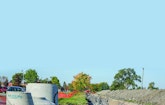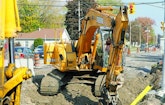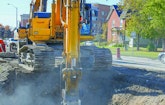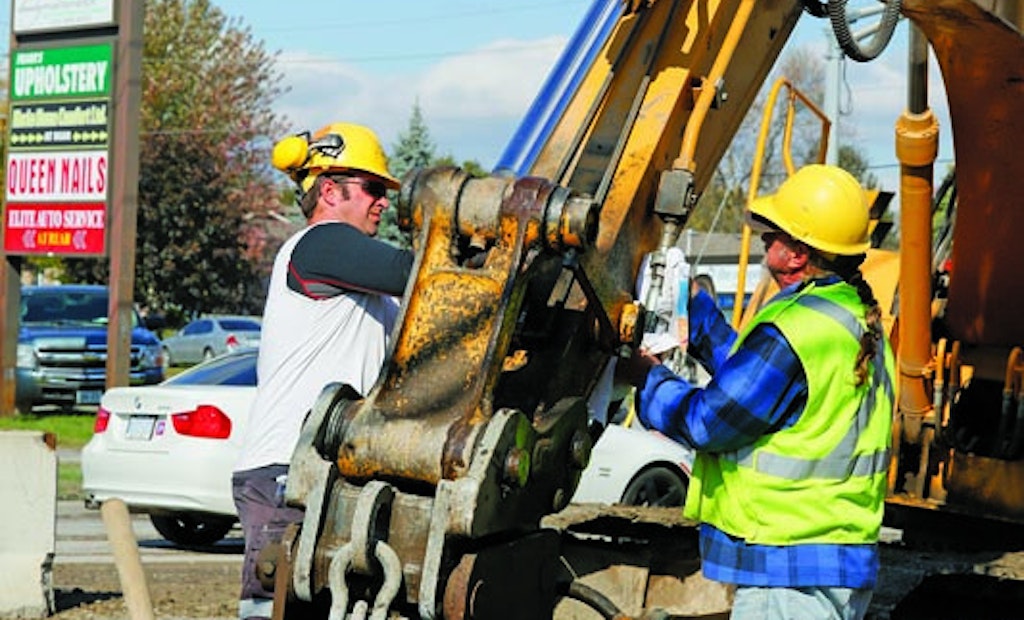Interested in Infrastructure?
Get Infrastructure articles, news and videos right in your inbox! Sign up now.
Infrastructure + Get AlertsThe City of Belleville, Ontario, has embarked on the largest infrastructure renewal project in its history. The plan is called BuildBelleville and will see the city investing more than $91 million on 22 infrastructure projects by 2017.
The projects include sewer and water rehabilitation and upgrades, road projects, bridge replacement and a downtown revitalization plan. While each of the projects achieves a distinct goal, many of them feature both sewer and water components. Because land acquisition, environmental assessments and other development costs were already covered under previous capital budgets, a considerable portion of the program budget will be devoted to actual construction.
Belleville is located near the north shore of Lake Ontario, about a two-hour drive northeast of Toronto. Belleville Water runs the city’s day-to-day water and wastewater operations, while Engineering & Development Services manages capital planning and execution for all water, wastewater and road projects.
With a population of only 40,000, the BuildBelleville project budget represents a significant chunk of change for the community. Mayor Neil R. Ellis championed the program based on an existing master plan completed in 2006 and the availability of a provincial government loan program, which guaranteed a 3.4 percent interest rate, locked in for a 20-year term.
The city had mapped its infrastructure a little more than 10 years ago using ArcGIS by Esri.
Asset management plan spurs action
“It was about five years ago that we took our first stab at an asset management plan,” says Rod Bovay, director of Engineering & Development Services for the City of Belleville. “It was just a first effort, but it gave us an inventory of what the city had done before and what still needed doing. The mayor was taken by the amount of money we theoretically should have been spending to maintain our infrastructure assets and noted that the city was falling well short of that under an asset management model. He became the driving force for BuildBelleville, shepherding it through City Council.”
The candidate projects were chosen based on an economic impact analysis, which looked at the overall economic impact of undertaking each project now, or delaying it for either five or 10 years.
“The city wanted to make sure that it could demonstrate it was getting value for the money invested,” says Mary Ann Walmsley, projects coordinator for BuildBelleville. “While the program doesn’t address all of the city’s infrastructure needs, it addresses those that will make the most difference to people and businesses. Once the work is complete, the plan is that any future capital infrastructure work will be financed by economic expansion as a result of what we’ve already achieved.”
The $91 million budget represents about one-quarter of more than $400 million in estimated maintenance and upgrade needs for the city’s $3.5 billion in assets. A few of the 22 projects that form the program were initiated in 2013, and some have already been completed. Regardless of start date, all of the projects are scheduled for completion by 2017.
Post-WWII boom
Like many North American cities, Belleville’s sewer and water infrastructure expanded rapidly during a post-WWII building boom. Other than a few short lengths, the city has eliminated its combined sewers, which had placed a big strain on the sewage treatment plant.
“The sewer system is in pretty good shape,” says Bovay. “Some of it is in the 60- to 70-year-old range. The trunk lines are primarily concrete, with the rest of the system made of a little bit of older vitrified clay and newer polyvinyl chloride.”
The water system is in even better shape, says Richard Reinert, manager, Environmental Services. The oldest cast iron pipe dates back to the 1880s, with newer segments made of ductile iron, PVC, asbestos cement and high-density polyethylene. Standard specifications allow contractors to bid PVC, ductile iron and concrete, depending on pipe diameter, but PVC is generally the material used in new construction and replacement.
“We have an active sewer relining program for the cast iron and ductile iron pipes,” Reinert says. “We were looking at candidates by the age of the pipe. When you’re dealing with pipe as old as 80 to 100 years, you tend to be proactive with relining, but in some of the pipe samples we cut, the oldest cast iron was clean as a whistle, possibly due to a high volume of flow.”
But Bovay notes that the condition of roads falls below the curve.
“For years, the city didn’t have a defined road resurfacing program,” he says. “The roads are now in the shape where you can no longer resurface them and we’re forced to do a full rebuild. Historically, we’ve always tried to make the most of these construction projects by combining the work with sewer and water projects when it’s cost-effective. Most of the sewer and water infrastructure is 5 or 6 feet below the roadbed, so we’re accelerating those projects that would have to be done in five to 10 years and combining them with upcoming road work.”
The single largest pipe project is the North East Feedermain, a $17.75 million open-cut/trenchless project to lay a 24-inch feedermain running more than 1.5 miles.
The project will also include full reconstruction of several of the roads involved, including storm and sanitary sewer, curb and gutter, new sidewalk and new asphalt.
Pacing the construction market
“We’re trying to schedule the projects to avoid overheating the construction market,” says Bovay. “We’ve been pretty fortunate that with many of these, a contractor has been geared up as they’re finishing one project and ready to keep on working on the next.”
However, the massive City Centre Revitalization project, budgeted at $21 million, didn’t attract the expected bids. An initial tender process, which included road, sewer and water components, took place in summer 2014 and resulted in bids over the $21 million budget.
“It’s an extensive project that involves storefront to storefront excavation,” says Bovay. “We were going to try to do that one as quickly as possible to lessen the pain, but we’re now going back to the drawing board with a new tender package that will break it up into separate projects over two or three years. In the meantime, we’re working on a few kickstarter projects, such as improving the entrances into municipal parking lots to improve traffic flow when the project goes into construction.”
BuildBelleville’s biggest challenges are neither technical nor financial. Bovay says that hiring enough project managers on two- to three-year contracts has proved difficult.
“We’re looking for project managers with municipal experience, but they’re in high demand and difficult to get interested in contract work,” he says. “We have three full-time project managers on staff and have hired outside design consultants in addition to hiring back one of our recently retired project managers on contract, which is a huge help. We haven’t achieved a full staff complement, but we’re keeping our head above water.”
With projects lined up one after the other over four years, Bovay says that provincial government regulations are also evolving between projects.
“The regulations are becoming more complex, so we’ve had to go back and have some of our early plans modified,” he says.
While BuildBelleville will go a long way to addressing the city’s infrastructure deficit, it’s only one part of a much longer journey.
“We sometimes joke among ourselves that we probably should have included this or that project in BuildBelleville,” says Bovay. “Someone invariably says that we’ll schedule them for BuildBelleville 2.0 or BuildBelleville 3.0. For now, this program is a good step in the right direction. If City Council wants to continue catching up on our infrastructure, there may be many more in our future.”
More Information
Esri - 800/447-9778 - www.esri.com













